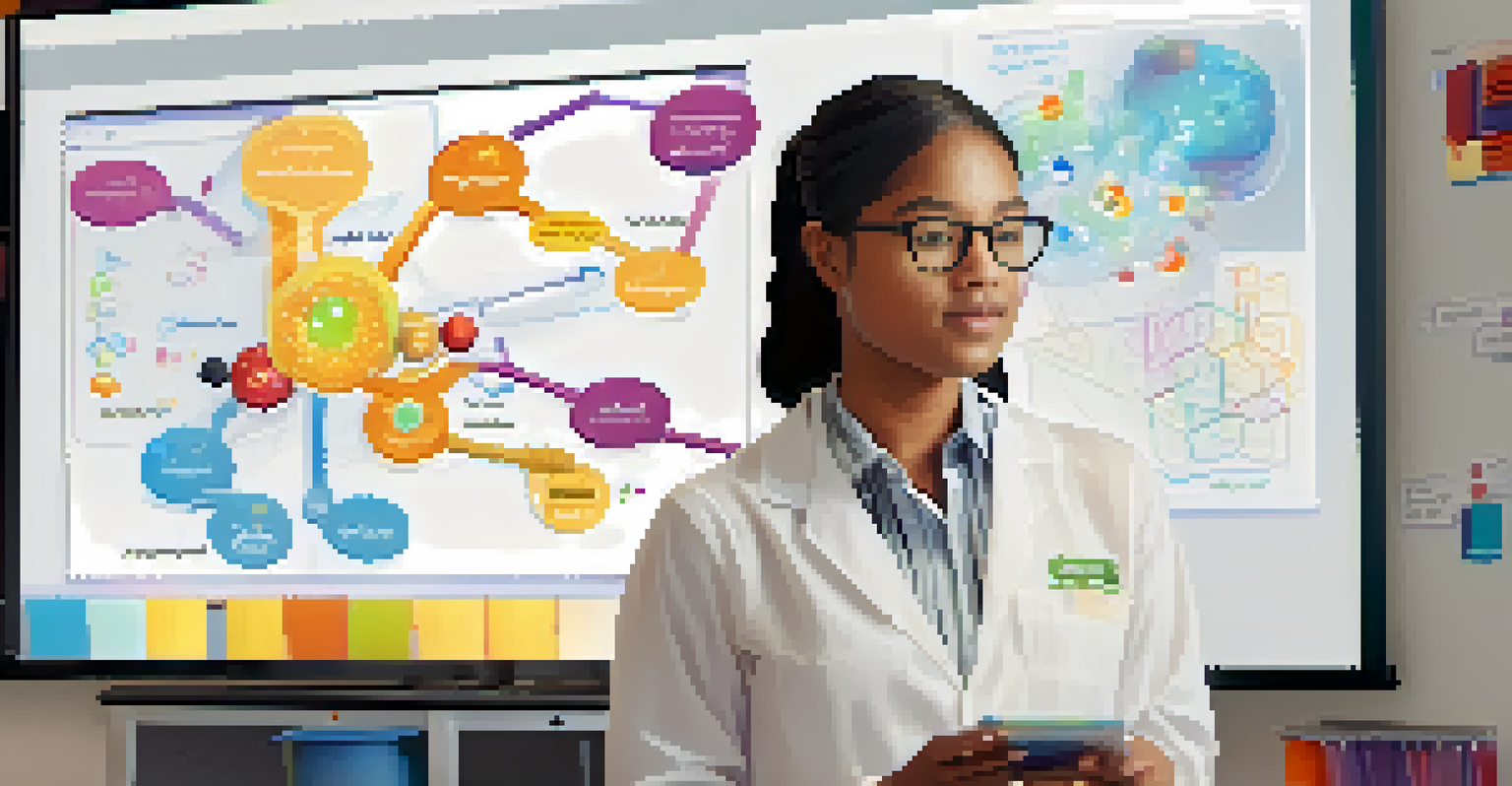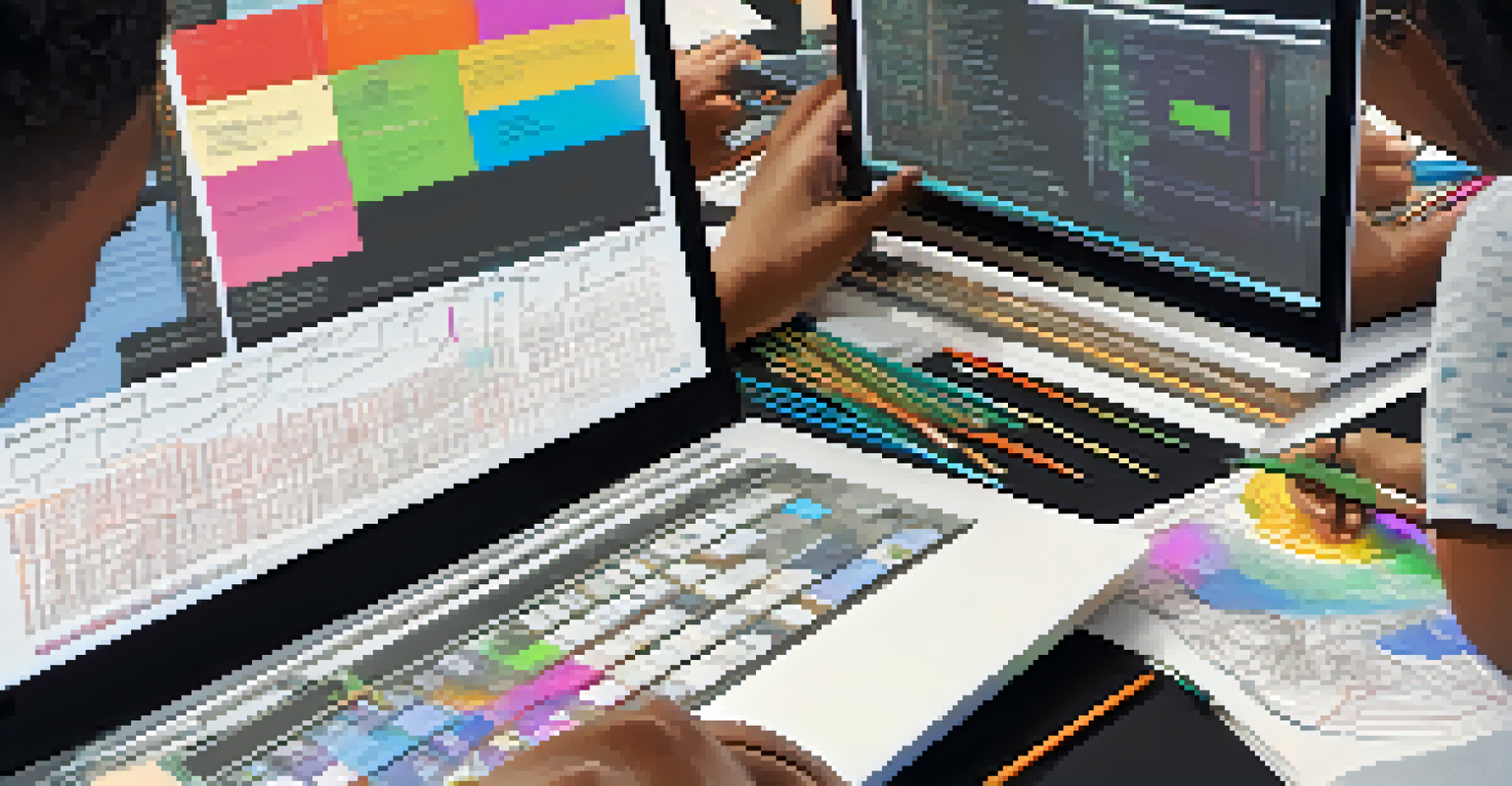Policy Innovations in STEM Education: Enhancing Student Engagement

Understanding the Need for Policy Innovations in STEM Education
In an era where technology and science drive our world, the need for effective STEM education has never been more critical. Traditional teaching methods often fail to engage students in meaningful ways, leading to a disconnect between curriculum and real-world application. This gap can result in a lack of interest in STEM fields, which are crucial for future job markets. By innovating educational policies, we can better align teaching practices with students' interests and the demands of the modern workforce.
STEM education is not just about learning science, technology, engineering, and math; it's about preparing students for the future by engaging them in real-world problem solving.
One of the primary goals of these policy innovations is to make STEM subjects more relevant and engaging for students. For instance, incorporating project-based learning can transform a dull lesson into an exciting challenge. Students might find themselves working on real-world problems, thus fostering a deeper understanding of the material and its applications. This hands-on approach can ignite a passion for STEM disciplines that traditional methods often overlook.
Moreover, innovative policies can promote inclusivity within STEM education. By ensuring that diverse voices and perspectives are represented, we can create a more inviting learning environment. This diversity not only enriches the learning experience but also prepares all students to thrive in a global workforce where collaboration and varied viewpoints are essential.
The Role of Technology in Enhancing STEM Education
Technology plays a pivotal role in transforming STEM education, making it more interactive and engaging. Tools like virtual labs, simulations, and coding platforms enable students to experiment and learn in a dynamic environment. For example, a student can use a simulation to conduct chemistry experiments virtually, allowing for safe exploration of concepts that might be dangerous in a traditional lab setting.

Additionally, technology can help personalize learning experiences. With adaptive learning platforms, educators can tailor their teaching methods to meet individual student needs. This customization can significantly improve engagement, as students feel more in control of their learning journey. By utilizing technology effectively, schools can create a more inclusive STEM curriculum that caters to various learning styles.
Innovative Policies Enhance STEM Engagement
By adopting innovative educational policies, we can align STEM teaching practices with students' interests and the demands of the modern workforce.
Finally, the integration of technology in STEM education prepares students for future careers. Familiarity with digital tools and platforms is essential in today’s job market. By using technology in their studies, students not only learn the subject matter but also develop critical skills such as problem-solving, collaboration, and digital literacy, which are highly valued by employers.
Project-Based Learning: A Catalyst for Student Engagement
Project-based learning (PBL) is a powerful approach that encourages students to engage deeply with STEM subjects. By working on real-world projects, students can see the relevance of their studies and how they apply to everyday life. For instance, a group project that involves designing a sustainable garden can teach students about biology, ecology, and engineering in a hands-on way.
The best way to predict the future is to create it.
This method not only enhances understanding but also fosters collaboration among students. They learn to communicate, delegate tasks, and solve problems together, which are vital skills in both academic and professional settings. The social aspect of PBL can make learning feel less isolating and more community-oriented, which is particularly beneficial for students who may struggle with traditional classroom dynamics.
Moreover, PBL encourages critical thinking and creativity. As students navigate challenges in their projects, they are prompted to think outside the box and develop innovative solutions. This environment cultivates a mindset that values exploration and experimentation, aligning perfectly with the core principles of STEM education.
Incorporating Real-World Applications into STEM Curriculum
Linking classroom lessons to real-world applications can significantly boost student engagement in STEM education. When students understand how their studies relate to everyday problems, they are more likely to invest time and effort into their learning. For example, teaching mathematics through budgeting for a class event can make abstract concepts tangible and relevant.
Real-world applications also help students develop critical thinking skills. They learn to analyze situations, consider multiple solutions, and make informed decisions based on evidence. This approach encourages students to see themselves as future professionals who can contribute to solving societal challenges, enhancing their motivation to pursue STEM careers.
Technology Personalizes Learning
Integrating technology into STEM education allows for personalized learning experiences, catering to the diverse needs of students.
Additionally, engaging with local communities and industries can provide students with invaluable insights into STEM fields. Guest speakers, field trips, and partnerships with businesses can expose students to potential career paths and inspire them to envision their future in STEM. These experiences can ignite a passion for learning and encourage students to explore various avenues within the STEM landscape.
Empowering Educators Through Professional Development
For policies to effectively enhance student engagement in STEM education, educators must be empowered with ongoing professional development. Training programs that focus on innovative teaching methods, technology integration, and project-based learning can equip teachers with the necessary skills to inspire their students. Investing in educators ultimately leads to a more engaging classroom environment.
Moreover, collaborative networks among educators can foster the sharing of best practices and resources. When teachers come together to discuss challenges and successes, they can collectively refine their approaches to teaching STEM subjects. This collaboration not only enhances individual teaching strategies but also builds a community committed to improving STEM education.
Finally, encouraging educators to pursue advanced degrees or certifications in STEM fields can further enhance their expertise. By deepening their knowledge, teachers can bring fresh perspectives and insights to the classroom, enriching the learning experience for their students. Well-prepared educators are crucial for implementing innovative policies that truly engage students.
Fostering a Growth Mindset in STEM Education
Cultivating a growth mindset is essential for engaging students in STEM education. This mindset encourages students to embrace challenges, learn from failures, and persist in the face of setbacks. When students believe that their abilities can improve with effort, they are more likely to take risks and explore new concepts in STEM subjects.
Incorporating activities that promote a growth mindset can help create a supportive classroom environment. For example, celebrating attempts and lessons learned from failures can shift the focus from grades to the learning process itself. This approach not only reduces anxiety around assessments but also fosters a safer space for exploration and innovation.
Project-Based Learning Boosts Interest
Project-based learning fosters collaboration and critical thinking, making STEM subjects more relevant and engaging for students.
Furthermore, educators play a vital role in modeling a growth mindset. By sharing their own experiences with challenges and perseverance, teachers can inspire students to adopt similar attitudes. When students see their educators navigating obstacles with resilience, they are more likely to mirror that behavior in their own learning journeys.
Evaluating the Impact of Policy Innovations in STEM Education
To ensure the effectiveness of policy innovations in STEM education, it is crucial to evaluate their impact regularly. Assessment methods can include student feedback, performance metrics, and engagement surveys. By gathering this data, educators and policymakers can identify what works and what needs improvement, allowing for continuous refinement of teaching strategies.
Moreover, case studies of schools that have successfully implemented innovative policies can provide valuable insights. These examples can serve as models for other institutions looking to enhance student engagement in STEM education. Sharing success stories can inspire and motivate educators to adopt similar approaches, ultimately benefiting more students.

Lastly, engaging stakeholders—such as parents, community members, and industry professionals—in the evaluation process can lead to a more comprehensive understanding of the impact of these policies. Collaboration among various stakeholders can foster a shared commitment to improving STEM education, ensuring that every student has the opportunity to thrive in these critical subjects.